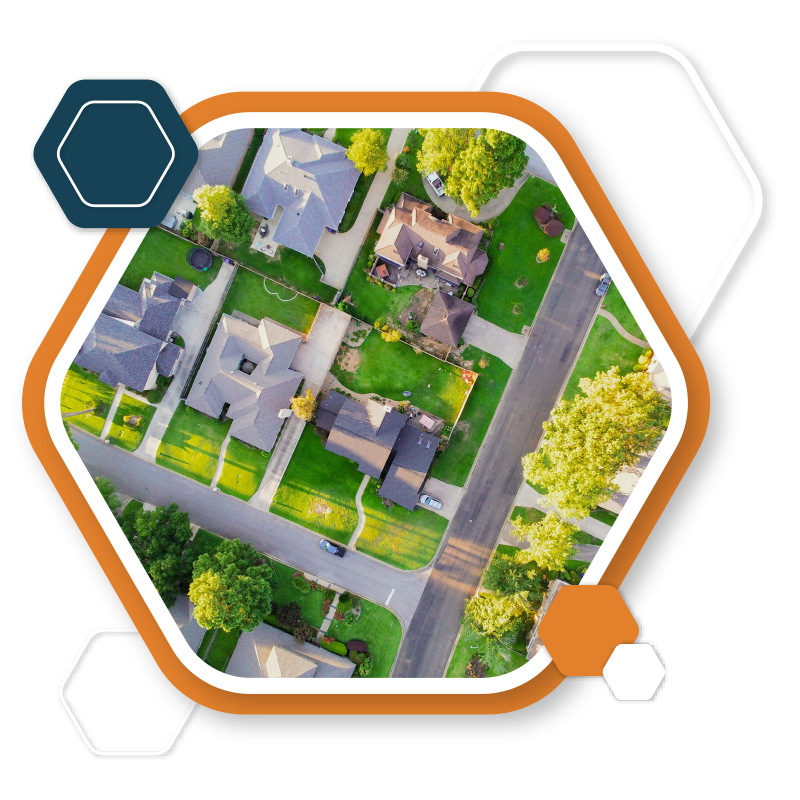
Thanks to its low prices, time-saving features, and incredible brand exposure, Every Door Direct Mail (EDDM) is one of businesses' favorite mailing services. However, with various solutions available that allow them to precisely target their audience with targeted direct mail marketing, some find that EDDM isn't always the best option.
In this blog, we'll take a closer look at what EDDM is and discuss its advantages and disadvantages so you can determine whether it's the right option for your business.
Remind Me What EDDM Is Again
EDDM stands for “Every Door Direct Mail.” It's a direct mailing service provided by the USPS, allowing businesses to send marketing materials, such as postcards or brochures, to every address (residential and business) within a targeted geographic area without needing a mailing list.
This service allows businesses to select specific postal routes using the EDDM mapping tool based on neighborhoods or ZIP codes. Their mail pieces are then delivered to every address on the route at a reduced postage rate.
The Advantages & Disadvantages of EDDM

EDDM is an affordable and effective way for businesses to reach a large audience within a specific area. However, whether or not it’s the right choice for your business depends on several factors.
To help you make an informed decision, here is a list of the pros and cons of EDDM:
The Advantages of EDDM
Lower Postage Rates
One of the most significant advantages of EDDM is its cost-effectiveness. EDDM offers incredible discounts, with postage rates lower than those of First Class and Standard Mail, providing businesses with an affordable way to reach potential customers through direct mail. This makes it an ideal option for businesses with limited marketing budgets and those just starting out and looking to establish a presence in a specific area. By using EDDM, businesses can make a great first impression on potential customers without spending a lot of money on postage. This allows them to distribute resources more effectively and achieve marketing goals without breaking the bank.
A Mailing List is Not Needed
Unlike other direct mail campaigns, EDDM doesn't require businesses to pull internal data or purchase a mailing list. While targeted mailing lists are effective, obtaining specific data can be costly. With EDDM, businesses can target potential customers based on geographic location without spending extra money on a mailing list.

EDDM Is Easy to Use
The process of creating and sending an EDDM campaign is straightforward and convenient. With the USPS EDDM mapping tool, businesses can easily view and select mailing routes while accessing key demographic information for each route. This allows you to choose the best routes for your marketing goals. Additionally, many print and direct mail companies offer EDDM services. They can print and mail your EDDM mailers directly from their facility, eliminating the need to visit the post office. This streamlined approach to EDDM can save businesses valuable time and resources, allowing them to focus on other aspects of their marketing campaign.
You Can Reach a Large Audience at a Low Price
One of the primary benefits of EDDM is its ability to help businesses reach a large audience at a relatively low cost. Other methods of reaching large audiences, such as billboards, TV commercials, or display ads, can be too expensive for many businesses. EDDM, on the other hand, enables businesses of all sizes and budgets to target every address within a chosen postal route. This means you can easily reach a large audience of potential customers without exhausting your budget.

Allows You to Target Specific Areas
While EDDM is not as targeted as other direct mail services, it still allows businesses to focus their marketing efforts on specific geographic areas. By selecting specific postal routes based on location, such as ZIP codes or neighborhoods, businesses can effectively reach potential customers in areas that align with their marketing goals. For instance, a restaurant looking to promote its grand opening could use EDDM to target the neighborhoods surrounding its location, ensuring that the message reaches the people most likely to visit the restaurant. This level of targeting, while not as specific as some other methods, still helps businesses increase sales and brand exposure.
The Disadvantages of EDDM
Longer & Unpredictable Delivery Times
Once the USPS accepts EDDM mailers, it can take anywhere from 3 to 14 days for mailers to arrive in mailboxes. This time frame varies based on location and mail volume. For example, places with less traffic and rural areas typically take longer, as do peak mailing times, such as holidays or during a political campaign. This large gap and unpredictable timeframe are due to EDDM not being prioritized for delivery by the USPS, unlike First-Class mail. The USPS processes EDDM after higher classes of mail, especially during elections, environmental delays, holidays, periods of high workload, or staffing shortages. It's also important for businesses to remember that this 3 to 14-day window isn't guaranteed and doesn't include the time it takes to print and process the mailers, making it essential to plan ahead and order their EDDM mailers as early as possible.
Targeting is Limited
While EDDM allows you to target specific areas, it isn't as precise as other direct mail services that let you reach an audience based on buying activity, interests, or specific demographics. For instance, if you’re advertising your new steakhouse using EDDM, chances are you will reach individuals who are vegetarians or have no interest in steak. While EDDM will still increase brand exposure and generate revenue, you would achieve better results by creating a mailing list based on people who live within a few minutes drive and are most likely to visit a steakhouse. Additionally, if your product or service is specifically tailored to businesses, EDDM has some drawbacks. With EDDM, you can target either residential addresses or a combination of residential and business addresses, but you cannot target businesses alone.
No Personalization

One of the main drawbacks of EDDM is that it lacks personalization options. Personalizing direct mail with variable data such as the recipient's name can increase response rates by 135%. However, since EDDM doesn't rely on mailing list data, businesses can't tailor their messages to individual recipients. Instead, it's important to pay close attention to the demographics of the chosen mailing route. Since images, colors, and messaging can't be personalized for each recipient, the direct mail design should reflect the majority of residents on the mailing route. For instance, if most of the residential addresses on the mailing route belong to people in their 20s and 30s, the images used should resonate with that age group to better connect with the majority of the audience.
Limitations on The Type of Mail You Can Use
The USPS has strict guidelines on the size and format of EDDM mailers, which limits the creative options available to businesses. For instance, postcards that are 6" x 11" or 6.25" x 9" qualify for EDDM, while postcards sized 6" x 9" or 5" x 7" do not. While there are many EDDM mailer sizes and formats to choose from, businesses with a specific idea in mind for their mailer may find that it doesn't qualify for EDDM due to size and format restrictions. This is important to consider when planning an EDDM campaign and you may need to adjust the design and format to comply with USPS regulations.
Tracking is Limited

Tracking responses of an EDDM campaign is easy using promo codes, call tracking numbers, personalized URLs, or coupons. However, tracking the delivery status isn't an option with EDDM. Barcodes are typically printed on every piece of direct mail, allowing post offices and businesses to track when mail pieces are delivered. Since EDDM mailers don't have barcodes, businesses can't gain insight into when their marketing messages are delivered. This can make it challenging to time follow-up communications and accurately measure the campaign's success.
Is Every Door Direct Mail the Right Option for You?
Every Door Direct Mail (EDDM) can be a valuable marketing tool, depending on your business goals and budget. If you're looking to reach a broad audience in a specific area, EDDM offers a cost-effective option for delivering your message. However, if you're looking to target a more specific audience based on demographics and interests or personalize your message, you should consider other direct mail strategies.
Generally speaking, EDDM is ideal for businesses seeking to market locally and offer a product or service that everyone can benefit from, such as car washes, restaurants, realtors, furniture retailers, or home services.
Ultimately, the decision to use EDDM should be based on your marketing goals and your audience's needs. If you're still unsure if EDDM is right for your business, contact our direct mail experts for guidance. And if you do decide to use EDDM, be sure to fill out our EDDM service form to get started on a smooth and effective Every Door Direct Mail campaign.
Get Started Today!









